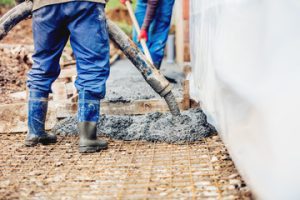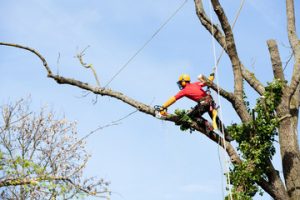Contractors Murfreesboro TN are the unseen gears turning the wheels of progress in countless industries. They bridge the gap between vision and execution with calculated precision. Every task they take on becomes a crucial link in larger chains of transformation. Their work often shapes environments long before anyone notices their presence.

In recent years, the role of contractors has shifted from simple service providers to strategic collaborators. They are no longer confined to following blueprints but are now involved in designing workflows. This evolution allows them to foresee problems before they arise. It also places them as vital voices in early planning discussions.
Modern contractors thrive on adaptability as projects become more fluid and fast-paced. They must pivot instantly when conditions change, whether due to design revisions or supply challenges. This requires a blend of resilience and foresight that goes beyond technical skill. Their agility ensures continuity even when uncertainty looms.
The nature of risk management has changed for contractors as they take on broader responsibilities. They now create contingency systems that anticipate disruptions before they occur. This reduces downtime and strengthens trust with project owners. Risk is no longer seen as a threat but as a navigable terrain.
Contractors are also becoming central to the rise of digital project ecosystems. They use advanced platforms to synchronize schedules, resources, and teams. These systems turn complex operations into coordinated streams of activity. It transforms scattered efforts into seamless progress.
Sustainability has quietly become a defining measure of contractor excellence. Many are embedding eco-conscious methods into their standard practices. They consider the life cycle of materials and the environmental weight of each decision. This mindset helps reshape industries from within.
Collaboration between contractors and creative designers is now more intertwined than ever. They work in tandem rather than in separate phases of development. This allows functional concerns and aesthetic visions to grow together. It results in spaces and products that are both practical and inspiring.
Financial planning has also become a crucial skill in the contractor’s toolkit. They must forecast costs with remarkable accuracy to keep projects stable. Even small miscalculations can ripple through entire budgets. Their precision keeps ambitions grounded in financial reality.
Communication has risen as a cornerstone trait among high-performing contractors. They navigate layers of stakeholders who each have unique priorities. Clear messaging prevents misalignment and delays that could derail progress. It transforms potential conflict into constructive momentum.
The workforce under contractors has changed shape as well. Many now build fluid teams that shift from one project to another. This flexible model lets them scale quickly without long lags in mobilization. It matches the tempo of industries that demand rapid turnaround.
Contractors have also embraced data as a tool to refine their operations. They collect metrics on timing, material use, and labor efficiency. These insights help them identify weak points and sharpen their methods. It turns every project into a laboratory for improvement.
Innovation is quietly emerging from contractors who experiment with modular strategies. They break large undertakings into repeatable segments that can be rearranged. This speeds up delivery while allowing customization on the fly. It gives projects a balance of structure and adaptability.
A new dimension of ethics is reshaping how contractors approach their work. Transparency is now valued as much as skill or speed. Clients expect clear records of sourcing, safety measures, and compliance. Ethical rigor has become part of their competitive identity.
Health and safety responsibilities have also expanded for contractors. They no longer treat safety as a regulatory box to tick. Instead, it is integrated into planning from the start. This culture of care reduces accidents and builds long-term trust.
Contractors are becoming more visible as mediators between technology and human effort. They introduce automation while protecting the livelihoods of their workers. This delicate balance requires vision and empathy. It ensures innovation does not erode human value.
Some contractors are now investing in cross-disciplinary training for their teams. Workers learn multiple roles, from logistics to technical design. This breaks down rigid divisions and accelerates workflows. It also makes teams more resilient to unexpected gaps.
Client relationships are being reframed as partnerships rather than transactions. Contractors guide clients through complex decision-making with patience. They translate technical constraints into clear choices. This mentorship role builds enduring loyalty.
Remote collaboration has expanded the reach of contractors beyond traditional borders. They can coordinate projects across continents without leaving their base. This requires mastery of virtual tools and time-zone juggling. It also opens access to global talent pools.
A quiet revolution is happening in how contractors handle waste from their projects. They are exploring ways to repurpose byproducts instead of discarding them. This reduces costs and minimizes environmental strain. It also fosters a reputation for resourcefulness.
Contractors have started engaging more with public perception and community impact. They recognize that their projects affect people far beyond the worksite. Building goodwill through community outreach has become part of their strategy. It softens the disruption their work might cause.
Time optimization has emerged as a hidden art form within contracting. They orchestrate overlapping tasks without causing chaos. This ability compresses schedules without sacrificing quality. It gives them a competitive edge in fast-moving industries.
Legal literacy has also become indispensable for modern contractors. They must navigate complex regulations while keeping projects agile. Knowing how to prevent disputes is as valuable as knowing how to build. It shields projects from costly interruptions.
Emotional intelligence is gaining ground as a defining trait among successful contractors. They manage diverse personalities under high pressure. Understanding how to motivate and support their teams drives performance. It turns stress into collective strength.
Many contractors now treat knowledge-sharing as part of their mission. They document methods and lessons from each project. This creates a library of insights for future endeavors. It keeps their organizations learning and evolving.
The influence of contractors is expanding beyond single projects into shaping entire industries. They contribute ideas that set new norms in efficiency and design. Their collective innovations ripple through supply chains and markets. It positions them as silent architects of transformation.
Future-focused contractors are preparing for industries that do not exist yet. They study emerging technologies and experimental materials. This foresight helps them adapt as markets shift in unpredictable ways. It keeps them ahead of disruption instead of reacting to it.
Contractors are redefining success not just by what they build but by what they enable. Their work creates platforms for other innovations to rise. Every structure or system they deliver becomes a launching point. Their legacy lies in opportunities unlocked for others.
The quiet strength of contractors rests in their ability to make complexity feel simple. They absorb uncertainty and turn it into stable progress. Their work is rarely celebrated yet forms the backbone of development. They remain the unseen force driving the future forward.

